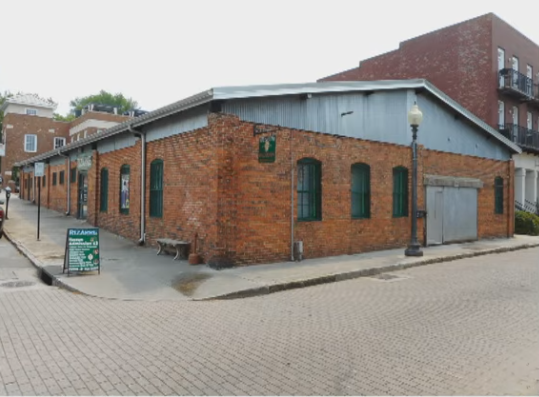Wilmington City Council approves ‘bizarre’ new landmark

WILMINGTON, NC (WWAY) — Wilmington City Council approved an ordinance designating the Wilmington Iron Works Building at 201 South Water Street as a Local Historic Landmark.
With its new status, major alterations to the exterior would be required to be reviewed by the Historic Preservation Commission (“HPC”) for approval of a certificate of appropriateness. Designation as a local historic landmark also makes the owner of the Property eligible for a 50% property tax deferral.
In July 2025, the HPC approved placing the Property on the local landmark study list. Following the review of an application for local landmark designation, on September 11, 2025, the HPC unanimously recommended that City Council consider the Property for local landmark designation.
The Wilmington Iron Works Machine Shop tells an important story in the City’s economic history. The structure housed a succession of businesses that contributed materially to the city and region’s development and spanned several different industries.
The Property began its life as a naval stores warehouse in the 19th century. It was transferred to Peter B. Ruffin on July 25, 1831. The son of North Carolina Supreme Court Chief Justice Thomas Ruffin (1787–1870), Peter was a merchant and financier from Hillsborough, NC. While the specifics surrounding Ruffin’s ownership of the property are unknown, a newspaper advertisement from August 24, 1864, references a “large shed” available for rent at the location, indicating its early use as a utility or storage structure. A subsequent notice from 1879 confirms continued
leasing activity on the site. The construction date of the subject property is not definitively recorded, but the Wilmington Historic Commission placed its construction in the 1870s, and the Historic Wilmington Foundation assigned “circa 1869” on its plaque.
During Reconstruction, following the Civil War, warehouse storage with access to the Cape Fear River and the Atlantic Ocean was vitally important to the naval stores industry. Naval stores, which include products such as tar, pitch, turpentine, and rosin derived from pine trees, were essential for maintaining wooden ships and had a wide range of commercial uses. Warehouses located near navigable rivers served as critical hubs for collecting, processing, and shipping these materials, enabling efficient transportation to coastal ports and export markets. This strategic access supported the revival of Southern industry and trade, linking inland production with global demand during the region’s postwar recovery.
The 1884 Sanborn map depicts a rectangular shed labeled as a general storage building for the Robinson and King industrial complex, which occupied the surrounding area. In 1889, the Sanborn map identified the building as part of the Tar Turpentine & Naval Stores, associated with the Robinson and King industrial complex.
By 1910, the label “Wilmington Iron Works” appears over the Machine Shop, located just south of a smaller foundry and office. Between 1915 and 1951, the Sanborn maps show that the frame Machine Shop was converted to a brick building on the same footprint, with the most likely time for the brick construction being circa 1925. While several other buildings were included in the Wilmington Iron Works through the early and mid-twentieth century, today, the Machine Shop is the only remaining part of the original Wilmington Iron Works facility.
D. L. Gore, a Civil War veteran and prominent Wilmington businessman, purchased the property in 1887. Gore maintained the property through the early 20th century and signed a lease agreement with the Wilmington Iron Works in 1908. Following Gore’s death in 1925, Wilmington Iron Works continued its tenancy before finally purchasing the Property in 1929 from Gore’s son, Claude. The Wilmington Iron Works emerged from a series of companies tracing back to 1859. Originally known as a “Tin and Sheet Iron Ware Manufactory,” the business evolved under various names, including Hart and Polley, Hart and Bailey, and Burr and Bailey. In 1892, the firm adopted the name Wilmington Iron Works.
From 1908 to 2000, the Wilmington Iron Works Machine Shop operated continuously, fabricating a wide range of iron goods to serve various industries, including doors and fences, gears, engines, boilers, and saws, as well as large locomotives and steamboats. When Wilmington became a railroad hub after the emergence of the Atlantic Coastline Railroad, locomotives and metal parts to service them became crucially important. During World War II, the shipbuilding trade required specialty metal components. As much of the American South relied on agriculture as a key part of its economy, specialized fertilizer machinery became crucial for production. For all of these needs across a wide spectrum of commercial uses, Wilmington Iron Works fabricated custom metal goods.
In 2000, Wilmington Iron Works went out of business, and its business property was sold at auction. The real estate traded hands several times in the following two decades before becoming home to the Museum of the Bizarre in 2015.



